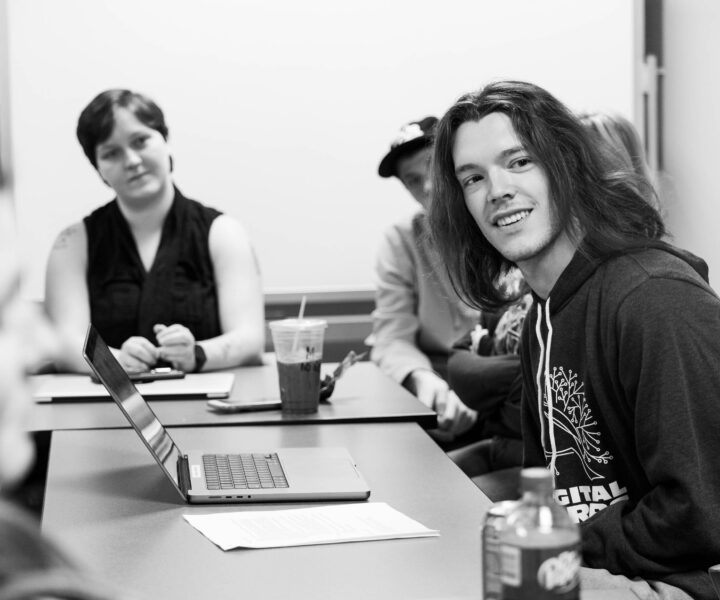The saying “an apple a day keeps the doctor away” may be a bit misleading. It’s less about the apple, and more about the daily routine that could be the reason you’re staying healthy. Do you ever look at someone and wonder how they have it all together? We all fall victim to comparing one busy schedule to another.
“How are they fitting all of that in their day?”
Sometimes it feels like others have a different 24 hours than everyone else. The real difference is you probably just haven’t found the right system that works for you.
Katherine Arlinghaus and Craig Johnston explored this very topic in their article with the National Library of Medicine. They found that while forming habits and routine is integral especially in children, it’s beneficial for adults too stating that, “habit formation ranged from 18 to 254 days.”
Creating habits can be hard, but they really are what sets you up for success. Here’s a list of 5 habits to try and see if they work for you!
Now, it may sound simple and like something everyone is told to do all the time, but the way that you create your to-do list is important. Not every list works for every person, and sometimes a method will fail. It’s important to recognize what is and isn’t working for your lifestyle.
While some people prefer an old-fashioned sticky note, others may reach for a more digitized version. Smartphones have a notes app or even widgets to display your to-dos on the screen. Platforms like Outlook offer OneNote and To-Do functions that integrate with your calendar and emails. It’s all about finding out what fits your lifestyle.
Another important aspect of a to-do list is making it manageable for you, and that might mean breaking the list into its simplest form.
Project Management Apprentice, Annika Dimon, knows a thing or two about a list.

“I’m really into to-do lists. Every week I map out what I need to do each day and just check things off as I get them done.”
For example, instead of putting “fold laundry” on your list, try putting “fold 10 items and put them in their place on X date.”
This gives you a quantifiable and actionable item that’s more pleasing for your brain and can give you a sense of accomplishment.
“It helps me feel productive and organized,” Dimon added. “When my week isn’t planned out, I get overwhelmed and frustrated.”
It may take longer to do your laundry, but it’s all about baby steps and reforming your habits!
2. Block out time to focus
We often think of our day in big, abstract chunks, but that just invites distraction. Try Time Blocking, which means assigning specific tasks to specific blocks of time in your calendar, treating them like mandatory appointments.
For example, instead of “Work on Project X all morning,” your calendar might say “9:00 AM – 10:30 AM: Draft Introduction for Project X.”
This small change helps minimize decision fatigue; you don’t have to wonder what to do next. Within this time blocking, identify your “Deep Work” window, the one to two hours where you naturally have the most energy and focus. Is it the first thing in the morning? Right after lunch? Protect that block by silencing notifications (really try to silence all of them) and work only on your most cognitively demanding tasks.

Development Team Specialist Mak Tobyas relies on external motivators to stay on track. “It is just self-discipline brought on by external motivators, such as school, work, or other scenarios where I have other people relying on me,” they said.
It can be challenging to focus, especially if your phone is linked to your computer. Consider implementing a “do not disturb” or “work mode” setting into your devices so only emergency notifications come through.
3. Keep like tasks together
While this method may not work for everyone, it is worth giving a try.
Not all work is created equally. You likely have tasks that require high mental energy (writing that paper you’ve been putting off or finishing up a big project) and tasks that are largely automatic or mindless (answering basic emails, organizing files, inputting data). Batching these low-energy, administrative tasks together can be a game-changer.
“I utilize my calendar a lot,” Tobyas noted. “I have two calendars: one for work and one for personal stuff, and I sync both onto one calendar in Outlook.”
By keeping school tasks in one calendar and personal stuff in another, Mak can block out what needs to happen when.
You can also try sticking tips 2 and 3 together by blocking out time for your more autonomous tasks. Try scheduling only these repetitive activities from 4 p.m. to 5 p.m. This preserves your brain for more complex work. By grouping tasks, you minimize the mental friction that comes from constantly switching gears between totally different types of work.
3. Set a timer
Tasks can often seem daunting and overwhelming before you start them, so play a game called “how long is this actually going take?”
Set a timer for what you view as a manageable time; that could be 10 minutes, 33 minutes or even an hour—whatever seems like it would work for you. Commit yourself to that task for that time period and when the timer stops, actually stop working. Don’t continue. Go give yourself a break, do a meaningless task, basically anything else other than the task at hand. Then go back to it, set another timer, and try again.
You’ll often find that the task really didn’t take as long as you thought it would, and suddenly, it seems much more feasible; you might’ve even gotten it done after the first timer!
5. Create a done list
Sometimes acknowledging your triumphs can help you through your challenges! Think about what you’ve accomplished this week or even in a day.
Did you check in with a professor?
Did you attend a metting?
Did you eat lunch?
Write all of that! Recognize what you’ve already accomplished to get you in a more productive



